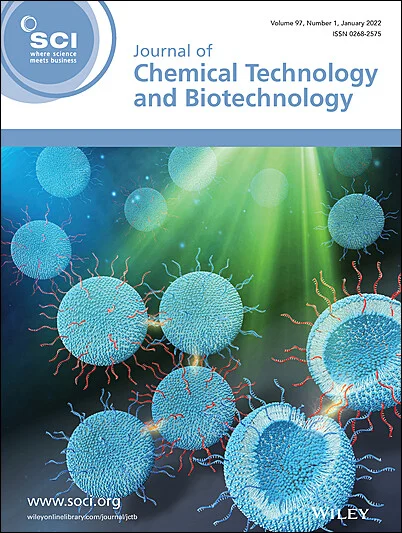Performance of iron – doped activated carbon synthesised from cocoa husk as a cathode catalyst in microbial fuel cell powered Fenton process
Abstract
BACKGROUND
Bio-electro-Fenton (BEF) systems, specifically microbial fuel cell (MFC) driven electro-Fenton (EF) systems, have gained significant attention in wastewater treatment in recent years. The role of the cathode catalyst in BEF is crucial, as it undergoes O2 reduction via a 2e− oxygen reduction reaction (ORR) to produce H2O2. In this study, we have harnessed the abundant lignocellulosic composition of cocoa pod husk (CPH) to prepare a novel iron-doped heterogeneous Fenton catalyst for the BEF system. Cocoa is typically grown for its wet beans, which constitute only one third of cocoa fruit by weight, while CPH makes up about two-thirds of the weight and is often discarded as by-product or waste. As a result, approximately 10 million tons of CPH are produced globally each year, highlighting the potential for transforming it into a value-added product. To date, CPH has been utilised as a natural fertiliser, soil amendment, biomass fuel, poultry and livestock feed ingredient, and more.
RESULTS
The presence of mesoporous structure, iron content, oxygen containing functional groups, and prominent reduction peaks in cyclic voltammetry validated the Fe-doped cocoa husk biochar's (Fe-CHB) potential to act as an ORR catalyst. The BEF system achieved an open circuit voltage, current, and power densities of 0.697 V, 0.15 A/m2, and 0.040 W/m2, respectively, at an optimum resistance of 350 Ω. Optimisation of the process parameters using RSM and ANN predicted maximum dye removal efficiencies of 93.34% and 92.45%, respectively, at dye and substrate concentrations of 10 mg/L and 1 g/L. These predictions closely aligned with the experimental findings of 92.5%.
CONCLUSION
The synthesised catalyst provided large surface area, electrical conductivity, superior ORR catalytic efficiencies, and ample sites for H2O2 activation. Hence, Fe-CHB can serve as a highly effective electrocatalyst in BEF systems. © 2024 Society of Chemical Industry (SCI).

 求助内容:
求助内容: 应助结果提醒方式:
应助结果提醒方式:


